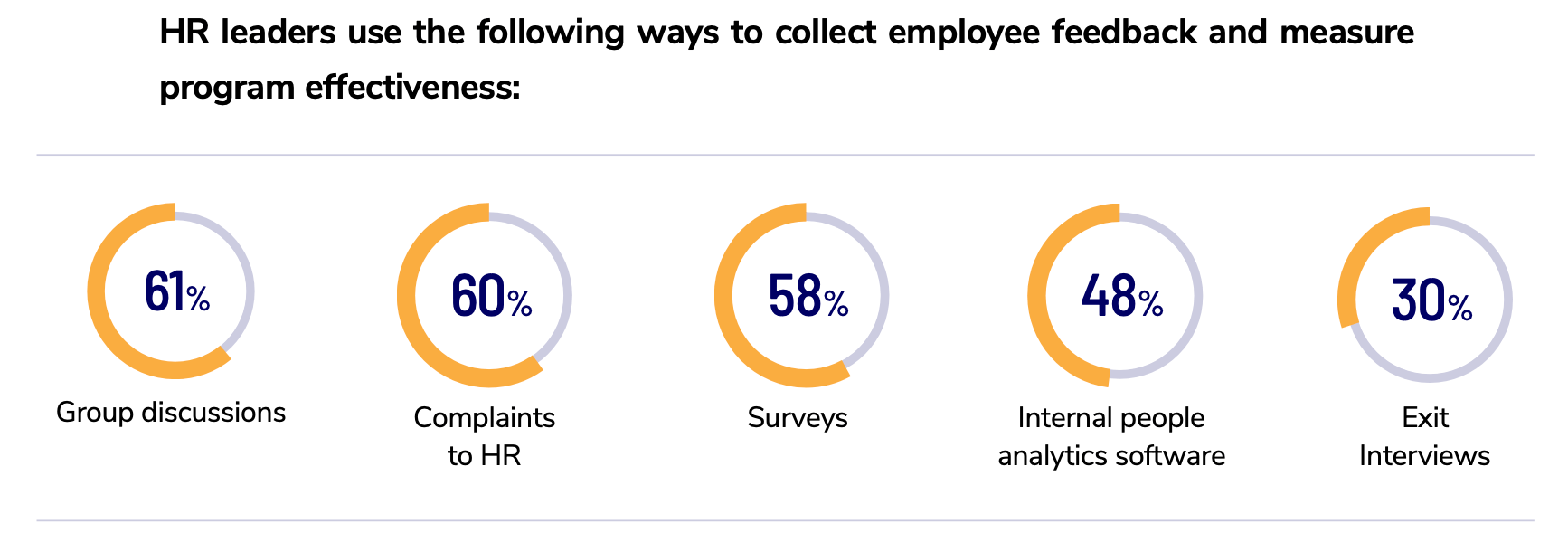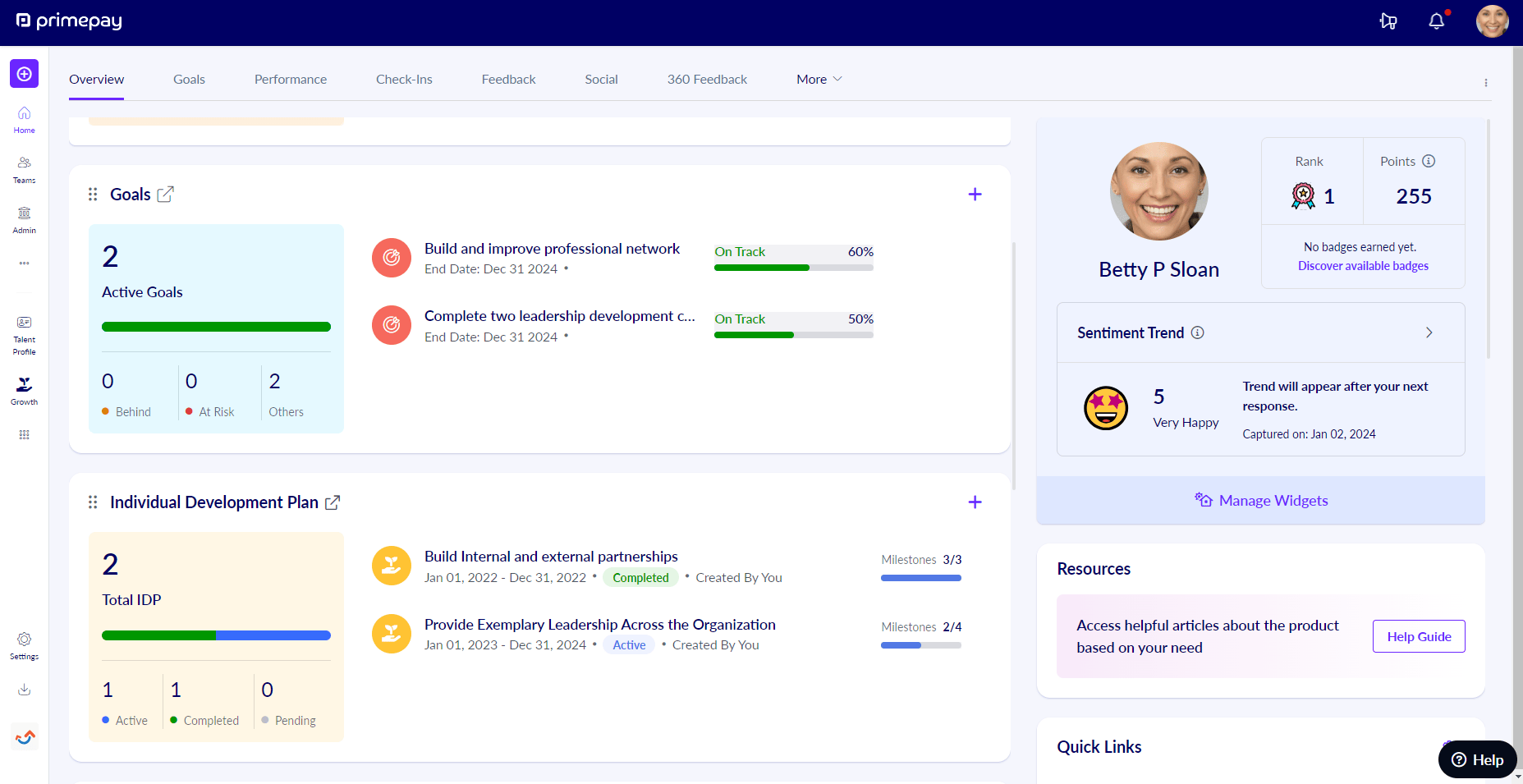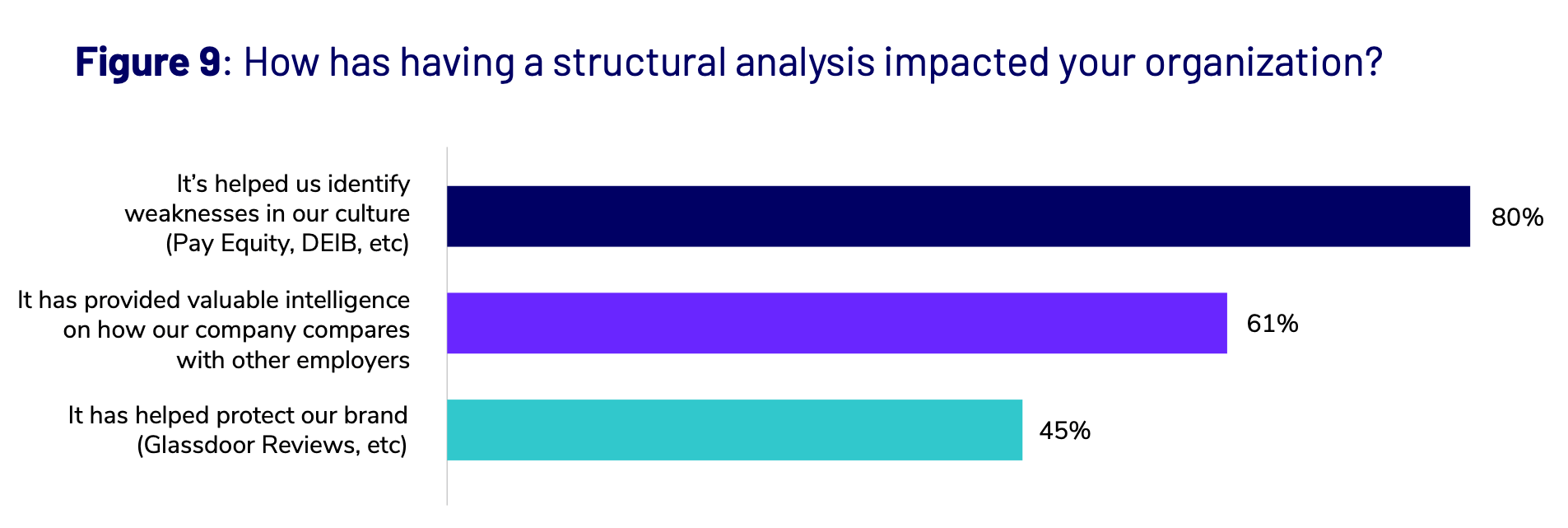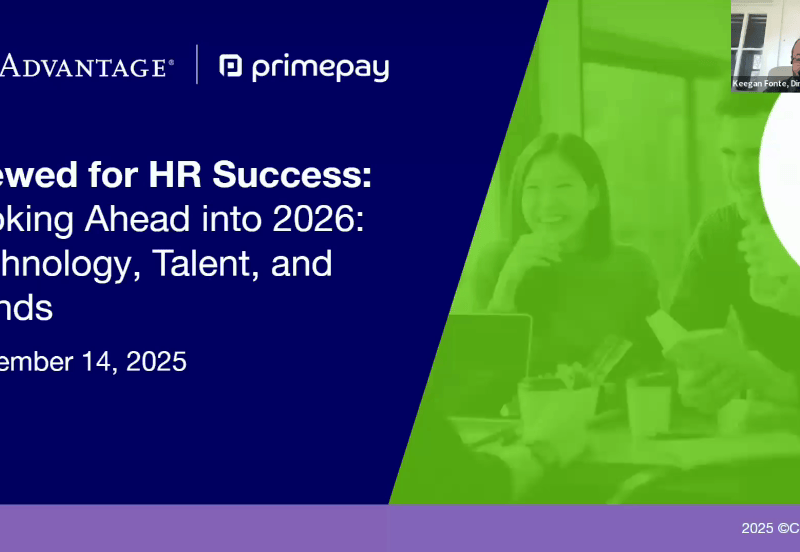Ten percent of companies don’t have a retention strategy in place. Maybe they’re too busy to create one. Or maybe they think their company culture is so strong that no one could possibly want to leave.
But if the last few years have taught us anything, employees will seek other job opportunities, especially if they feel under-challenged or undervalued. What’s worse, without a retention strategy, you risk losing people (who are equipped with institutional and strategic knowledge) to your competitors.
The bottom line? Talent retention needs to be a top priority if you want to remain competitive and maintain organizational health.
To ensure your best employees stay on board, we’ve compiled a list of eight tips and tricks for retaining top talent at your company.
1. Use Data for Talent Retention
Data is the foundation for any strategy, and it’s no different when creating one to retain talent. Interestingly (but not surprisingly), companies with high eNPS scores use the most employee retention strategies and regularly collect data to determine their successes and future programming.
Because here’s the hard truth: Implementing a talent retention strategy doesn’t really matter unless you measure its effectiveness and make iterative improvements.
While our data shows that there’s still room for improvement, HR leaders use the following ways to collect employee feedback and measure program effectiveness:

2. Build an Inclusive Company Culture
Another talent retention strategy (and general best practice) is to build an inclusive company culture. Inclusivity must start at the top and be woven into all practices and procedures throughout your employee lifecycle.
Start by analyzing if your:
- Job descriptions and interview practices use inclusive language and attract people of all backgrounds and abilities.
- Benefit offerings reflect the needs of your multigenerational workforce.
- Employee resource groups (ERGs) are allowed to drive positive change in the workplace.
Note: Thirty-six percent of employees leave due to a lack of diversity within their company. Prioritize hiring people with diverse backgrounds who bring various skills and experiences to the table to help improve learning, collaboration, and innovation across the organization.
3. Align Individual, Team, and Company Goals
Imagine working forty hours a week and not understanding how your role contributes to the bigger picture. Frustrating and a little demoralizing, right?
Therefore, it’s crucial to prioritize goal alignment for new and seasoned employees as you focus on retaining talent. When people understand how their work contributes to broader organizational objectives, they’re more likely to feel valued, motivated, and connected to the company’s successes.
To ensure employees feel supported and make that direct connection, include goal-setting conversations and OKR reviews as part of your continuous performance management strategy.

Performance management software makes it easy to connect the dots between individual, team, and company goals with interactive features and benchmarks.
4. Recognize Your People
If you want to retain talent, you need to incorporate employee appreciation into your company culture. Recognizing your people shouldn’t be a one-off event, although those are nice too. Instead, continuous recognition should be instilled at a company-wide level, and employees should be encouraged to do the same with their peers.
Some ideas are:
- Creating quarterly value awards per company or department.
- Using a recognition platform for leaders and employees to post on.
- Celebrate important milestones (like work anniversaries) and professional accomplishments (like closing that big deal that’s been in the works for months).
Note: While rewarding a job well done is essential, addressing poor performance is just as important. You don’t want every employee’s performance treated the same way, as it may lead to top performers feeling underappreciated. Recognize your best performers and work with low performers to improve their efforts and meet their goals.
5. Focus on Learning and Development
According to a Pew Research survey, 63% of people who left jobs in 2021 cited a lack of advancement opportunities as a reason. Even worse, 49% of people surveyed by MIT Sloan said a lack of good career advice has hurt their job trajectory.
If you want your organization to stand out from the crowd and retain talent, lean into learning and development – beyond basic compliance training.
Consider implementing the following to boost your employee retention efforts:
- Training for your managers. Lillit Cholakian of NewGen Global Leaders explains: “Managers are often promoted to their positions because they work hard, have the required technical and professional skills and understand the work. However, they rarely have prior training in how to lead, empower and motivate their people. So, initial and ongoing training, mentoring and coaching are critical to every manager’s effectiveness, influence and success, and hence, the company’s success.”
- Stipends for courses and training. Allow employees to choose their own training and development to help them reach career goals and advancement opportunities. Even better, provide career maps to employees with specific skill sets needed to empower them to upskill and advance.
- Learning and development software. The right software enables leaders to create courses for teams or individuals, assign lessons, track completion metrics, and provide personalized feedback.

Consider HR software with learning management functionalities to upskill your people and offer personalized professional development training.
6. Offer Competitive Compensation Plans
Are your organization’s compensation packages competitive within your industry and region? If not, your talent retention efforts may be for naught.
Unfortunately, when candidates and employees see a low salary and less-than-stellar benefits offered, they may view it as something greater: that the organization doesn’t prioritize its people and their well-being.
If you can’t provide a competitive salary, consider upping your benefits for now (since benefits are now valued more than money) and reevaluate salary bands in the future.
Note: If you increase compensation ranges and benefits for candidates, do the same for current employees. Many organizations didn’t correct this oversight in 2021 and saw waves of top talent leave in disgruntled states to find higher-paying positions elsewhere.
7. Promote Work-Life Balance
Employees’ prioritization of work-life balance is here to stay, meaning companies must adopt this approach to retain talent.
Here are several ways organizations can help employees maintain work-life balance:
- Flexible work arrangements: We get it – not all companies have the luxury of allowing employees to work remotely. But those that can see an improvement in their talent retention since flexibility (i.e., flexible work hours, remote work options, and compressed workweeks) helps people manage their personal and professional lives, which leads to reduced stress and improved job satisfaction.
- PTO and leave policies: Offering generous paid time off (PTO), including vacation days, sick leave, and personal days, allows employees to take breaks and recharge. Organizations should also have policies that accommodate family-related needs, such as parental leave, bereavement leave, and caregiving leave.
- Encouraging disconnect and preventing burnout: Promote a culture where employees feel comfortable disconnecting from work outside of office hours. Encouraging employees to take time off, limiting after-hours emails, and setting boundaries on work-related communication can prevent burnout and support work-life balance.
8. Utilize Offboarding Feedback
You’re probably thinking: Offboarding to help retention? But those people are already leaving!
Sure, they’re out the door, but exit interviews are a prime opportunity to gather feedback from departing employees to improve your employee lifecycle. Yet, only 64% of HR leaders conduct a structured analysis of exit interviews — meaning they identify common themes and use them to identify cultural weaknesses in the organization.
Offboarding employees usually don’t hold back when sharing positive and negative experiences, giving you honest insights into your employee experience and programming. Just ensure you have a standardized offboarding process in place so the data you collect is accurate and unbiased.

Increase Your eNPS and Boost Retention
Although HR leaders work hard to respond to employee needs, only 17% of organizations report having an excellent eNPS score. Read our report, Current State of the Employee Experience, to learn how other companies think about the employee experience and the tactics they use to retain top talent.









